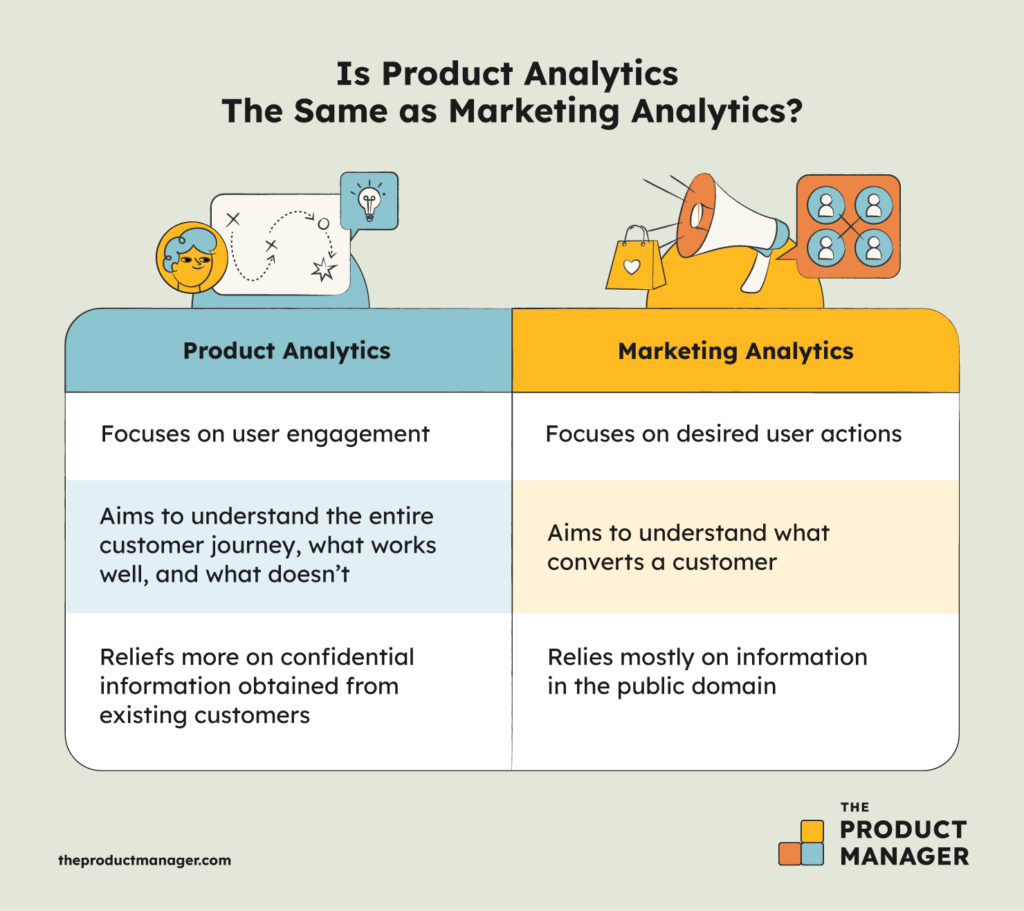Introduction
Product management has evolved significantly over the years. Gone are the days when gut feelings and intuition alone guided product decisions. Today, the key to creating successful products lies in leveraging data and insights. This is where product analytics comes into play.
In this guide, we’ll explore the realm of product analytics and how it can empower product managers to make informed decisions, create better user experiences, and ultimately drive the success of their products.
Chapter 1: Understanding Product Analytics
Before diving into the specifics of product analytics, let’s first clarify what it is and why it’s essential for product managers.
What Is Product Analytics?
Product analytics is the process of collecting, measuring, and analyzing data related to a product’s usage and performance. It involves tracking various metrics and user interactions to gain insights into how users are engaging with your product.
Why Product Analytics Matters
Product analytics is not just another buzzword. It’s a game-changer for product managers. Here’s why it matters:
Informed Decision Making: With data at your fingertips, you can make decisions backed by evidence rather than relying on hunches.
User-Centric Approach: Product analytics helps you understand your users better, enabling you to tailor your product to their needs and preferences.
Optimization: You can continually improve your product based on real user feedback and behavior, leading to higher user satisfaction and retention.
Chapter 2: Key Metrics for Product Managers
To effectively use product analytics, you need to know which metrics to track. Here are some of the key metrics that every product manager should be familiar with:
User Acquisition: How are users finding your product? Understanding acquisition channels can help you allocate resources effectively.
User Engagement: Are users actively using your product? Metrics like daily active users (DAU) and monthly active users (MAU) provide insights into user engagement.
Retention Rate: What percentage of users continue to use your product over time? High retention rates are a sign of a sticky product.
Conversion Rate: How many users are completing desired actions, such as signing up, making a purchase, or upgrading their account?
Churn Rate: On the flip side, how many users are leaving your product? Reducing churn is critical for sustainable growth.
Customer Lifetime Value (CLTV): What is the long-term value of a customer to your business? This metric helps you make decisions about customer acquisition costs.
Chapter 3: Implementing Product Analytics
Now that you understand the importance of product analytics and the key metrics to track, it’s time to implement it effectively.
Choosing the Right Tools
There’s a wide range of analytics tools available, from Google Analytics to specialized product analytics platforms like Mixpanel and Amplitude. Selecting the right tool for your needs is crucial.
Data Collection and Integration
Once you’ve chosen your tool, ensure that you’re collecting the right data and integrating it into your product seamlessly. This might require collaboration with your development team.
Creating a Data-Driven Culture
It’s not enough to have data; your team needs to embrace a data-driven culture. Encourage everyone to use analytics to inform their decisions, from marketing to design.
Chapter 4: Analyzing and Acting on Data
Collecting data is just the first step. The real value of product analytics lies in your ability to analyze it and take action.
Data Analysis Techniques
Learn how to perform essential data analysis tasks like cohort analysis, funnel analysis, and A/B testing. These techniques will help you uncover valuable insights.
Iterative Product Development
Product development is an ongoing process. Use your analytics to iterate on your product continually. Test new features, track their impact, and refine based on the results.
User Feedback Integration
Combine quantitative data with qualitative insights from user feedback, surveys, and usability tests. This holistic approach ensures you’re addressing both the what and the why of user behavior.
Chapter 5: Avoiding Common Pitfalls
As powerful as product analytics can be, there are some common pitfalls to watch out for:
Overanalysis: Don’t get lost in the data. Focus on the metrics that matter most to your product’s success.
Confirmation Bias: Be open to insights that challenge your assumptions. Don’t use data to confirm preconceived notions.
Ignoring Privacy and Security: Ensure that you’re handling user data responsibly and in compliance with regulations like GDPR.
Lack of Action: Don’t collect data for the sake of it. Use it to drive action and improvements in your product.
Conclusion: Becoming a Data-Driven Product Manager
In today’s competitive landscape, product managers must embrace data-driven decision-making. Product analytics provides the tools and insights needed to understand user behavior, optimize products, and drive success.
By understanding the fundamentals of product analytics, tracking key metrics, implementing effective tools and practices, and avoiding common pitfalls, you can become a skilled data-driven product manager, poised to lead your product and your company to new heights. Remember, it’s not just about the data; it’s about how you use it to create exceptional user experiences and build products that users love.



